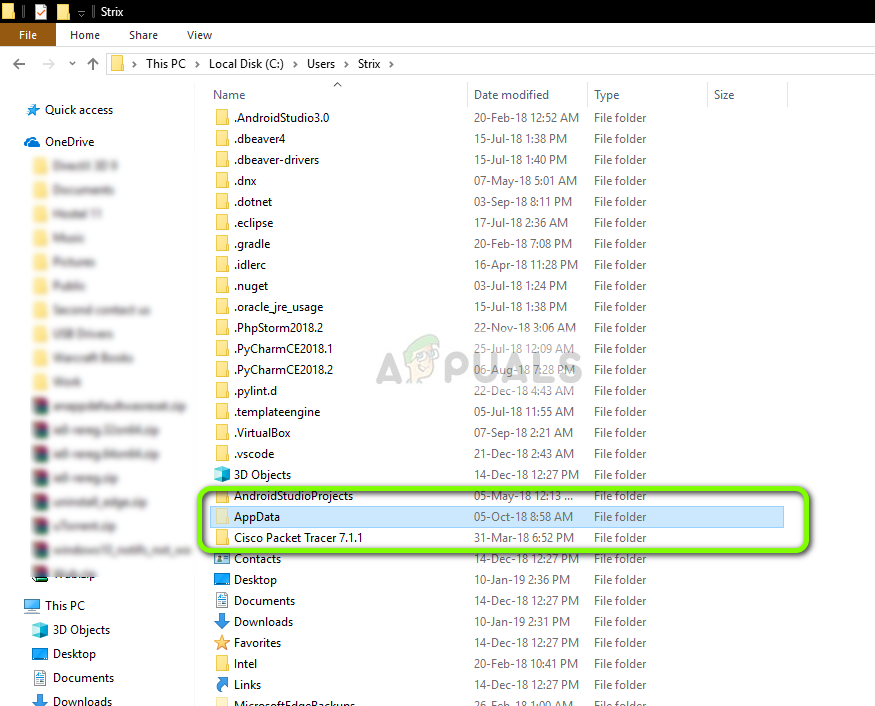Fix: Can’t find AppData Folder Windows
Application data (or AppData) is a folder present in the Windows operating system which contains data created by programs and applications. Almost every program you install on your computer creates an entry in the AppData folder to store its information and configuration.

Even though you might not need the folder if you are a regular user, it comes handy when you are transferring information about applications between two computers. You can copy the configuration stored for Google Chrome from one computer to another just by copying its entry.
Despite its usefulness, we came across several cases where users reported that they were unable to find the AppData folder on their Windows. By default, the folder is hidden in your operating system and might not be easily accessed if you do not know the tricks.
Method 1: Accessing using %appdata%
Normally the AppData folder resides in your user folder which is the same directory that contains all your documents, music, pictures, etc. However, instead of navigating through the File Explorer to the specific location, you can easily use roaming to access the folder.
We use roaming because the %appdata% environment variable doesn’t actually point to the exact AppData folder. Instead, it points to the roaming folder inside the AppData which consists of the bulk of all application data.
- Press Windows + R, type “%appdata%” in the dialogue box and press Enter.

- This command will open the Roaming folder inside the Application Data folder. If you want to access the parent folder (Application data) just go one step back using Windows Explorer.

Method 2: Using Windows Explorer
Another way to access the Application Data folder is using the Windows Explorer to navigate to the exact directory. Normally, you will not find the AppData folder in your User Profile page because it is hidden by default. We will change the hidden settings and then access the file location. Make sure that you are logged in as an administrator.
- Press Windows + E to access the Windows Explorer. Now click on View present at the top tab and then click on Options. Then select Change folder and search options.

- Once in the settings, click on View and then select Show hidden files, folders and drives underneath the heading Hidden files and folders.

- Press Apply to save changes and exit. Now press Windows + E and navigate to the following directory:
C:\Users\{username}Here {username} is the username of your computer (without the brackets). In here you will find the AppData folder shaded out because it is hidden. Simply click it like any other folder and you will be able to access it.

What to do if AppData Folder is Missing?
If you cannot access the Application Data (AppData) folder using any of the two methods above, it probably means there is some problem with your operating system. Your applications might not be working properly and may fail to initialize.
To remedy this, you can perform a system restore and choose a recent restore point. Make sure that you select a recent restore point which was taken the latest and then work your way outwards.

If system restore doesn’t work, you probably need to create a new profile on Windows and see if the folder is present there. Whenever a new profile is created, a new AppData folder is created on your computer. Make sure that you perform all the steps and only transfer all the data when you are sure the new profile isn’t without any issues.
If even creating a new profile doesn’t work, you should backup your data and do a clean installation of Windows on your computer. Your system/installation files are most probably corrupt and are causing issues.
Note: You can also run an SFC/DSM on your computer. SFC is a system file checker that scans for all files on your computer and after comparing them with the online manifest, replaces them accordingly.




